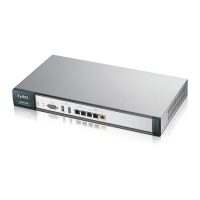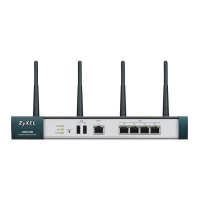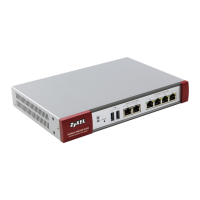UAG Series User’s Guide
136
CHAPTER 9
Wireless
9.1 Overview
Use the Wireless screens to configure how the UAG manages the Access Points (APs) that are
connected to it.
9.1.1 What You Can Do in this Chapter
•The Controller screen (Section 9.2 on page 137) sets how the UAG allows new APs to connect to
the network.
•The AP Management screen (Section 9.3 on page 137) manages all of the APs connected to the
UAG.
•The MON Mode screen (Section 9.4 on page 144) allows you to assign APs either to the rogue
AP list or the friendly AP list.
•The Load Balancing screen (Section 9.5 on page 146) configures network traffic load balancing
between the APs and the UAG.
•The DCS screen (Section 9.6 on page 148) configures dynamic radio channel selection on
managed APs.
•The Auto Healing screen (Section 9.7 on page 151) turns on the auto healing feature to extend
the wireless service coverage area of the managed APs when one of the APs fails.
9.1.2 What You Need to Know
The following terms and concepts may help as you read this chapter.
Station / Wireless Client
A station or wireless client is any wireless-capable device that can connect to an AP using a wireless
signal.
Dynamic Channel Selection (DCS)
Dynamic Channel Selection (DCS) is a feature that allows an AP to automatically select the radio
channel upon which it broadcasts by scanning the area around it and determining what channels
are currently being used by other devices.
Load Balancing (Wireless)
Wireless load balancing is the process where you limit the number of connections allowed on an
wireless access point (AP) or you limit the amount of wireless traffic transmitted and received on it
so the AP does not become overloaded.

